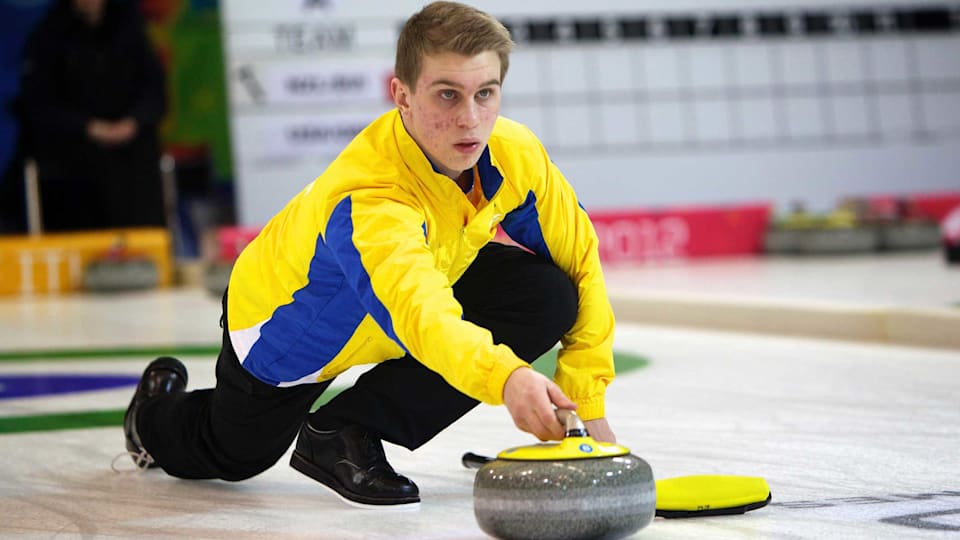Rasmus Wrana’s Guide to Curling at PyeongChang 2018
Sweden’s Olympic debutant Rasmus Wrana and his teammates are going for gold at PyeongChang 2018. Here, the 23-year-old offers some insider knowledge on the high-pressure sport which originated in 16th-century Scotland and is described as “chess on ice”.

Curling is all about tactics and decision-making, and at the Olympic Games, with millions watching on TV across the globe, the athletes compete in the sport’s most intense environment.
In curling, two teams of four take turns sliding rocks on a 45m-long ice sheet, trying to stop them as close as possible to the middle of the circle at the other end called “the house”. They also try to knock their opponents’ stones away from the house.
So, having already spent plenty of time in the gym in the build-up to the PyeongChang 2018 Olympic Winter Games, Wrana and his teammates are fine-tuning their decision-making skills.
“We try to compete as much as possible, and when we don’t train curling we play pool, which is pretty similar to curling in many aspects,” Olympic debutant Wrana, 23, confides.
“When you hit the ball in pool, the movement is very similar to a slide in curling. It has to be perfect from the beginning to the end. And we have discovered that it’s really important with pool to always keep that competition mode, so that we never make any weird decisions in competition.”
The lowdown
Originating in Scotland in the 16th century, curling has been an Olympic sport since Nagano 1998. In PyeongChang, mixed doubles features on the programme for the first time.
Every player in each team slides two stones each, starting with the “lead”, then the “second”, the “third” and the “skip”. Wrana is second after Christoffer Sundgren, with Sochi 2014 bronze medallists Oskar Eriksson and Niklas Edin as third and skip, respectively.
After the slide, two other team members sweep the pebbled ice in front of the stone with brooms to make the stone to go further – or to curl it.
“You normally say that the execution, the slide, count for about 90 per cent of the whole thing,” Wrana explains. “Then you can affect the stone a bit with the sweeping but not too much. On a good ice, you can increase the push by about three metres if you sweep all the way.”
A draw decides which team will get the advantage of the last stone, called the “hammer”, in the first of the match’s 10 rounds, called “ends”. After that, the team that won points in the previous end starts the next one.
Key skills & top tips
One basic rule that Wrana was taught as a junior is that when you have the last stone, you should try to keep the middle of the ice clear to be sure to secure at least one point.
“If you want to play an offensive style, you put one stone just in front of the circle – a guard – to hide your stones behind later on,” Wrana said.
“And if you have the end’s last stone you always try to keep a pretty open circle, playing on the sides, so that in the worst case you always finish with a stone in the centre and get the single point. If there are lots of stones around the middle it could be impossible even to get that one point.”
Going for gold
“Everyone’s looking forward to the Games and we do have high hopes, being medal favourites. We aim for the gold.” - Wrana warns.
Sweden are also World Championship silver medallists, behind Canada, on the women’s side; but the two favourites – who contested the Sochi 2014 final – will face tough competition from Great Britain’s team led by Eve Muirhead who, representing Scotland, beat Sweden to the European Championship title last year.
